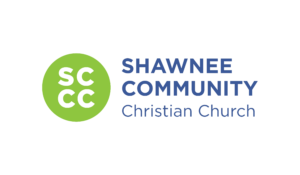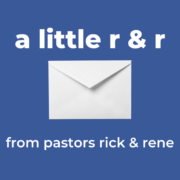a little r & r

With spiritual, emotional, and historical implications, the seasons of life, have always been a compelling subject to me. Combined with my persistent need to know “Why?” these seasons are never far from my consciousness. Due to the chaos of events that began with Hurricane Katrina in 2005, the onset of the Great Recession from 2007-2009 through the Obama and Trump Presidencies, these seasons of life are on the front burner of my mind.
Because I loving visiting bookstores, I keep running into a book I read some years ago titled The Fourth Turning about the 4 seasons of life in American history. The book was written by the late Harvard political scientist Bill Strauss, founder of the Capitol Steps Satirical Musical Comedy Group out of D.C., and Neil Howe, Yale economist and historian who serves as a consultant for the Global Aging Initiative at the Center for Strategic Studies. Prior to The Fourth Turning they co-authored what many demographers regard as the seminal work on generational studies: Generations: The History of America’s Future: 1584-2069.
With the publication of The Fourth Turning in 1997, Strauss & Howe predicted our nation would see the climax of a crisis in 2020 and the emergence of another “gray champion” (from author Nathaniel Hawthorne’s classic story) who would usher in a new economic “zeitgeist,” resembling a New New Deal. I leave it to you to connect the dots.
But first: What is a Fourth Turning?
It is a Winter-like period of crisis and chaos, which recurs approximately every 80 to 100 years in American history. It’s two most notable marks are economic and military in nature. To wit: The Great Recession reached its zenith in 2009, almost exactly 80 years after Black Friday, the Wall Street Crash on October 29, 1929, when the New York Stock Exchange collapsed.
Starting with the American Revolution from 1777-1783, the U.S. has engaged in a major war every 80 years: The American Civil War from1861-1865 and WWII from 1941-1945. While other wars have broken out and been consequential the above wars are considered the most defining in the lasting effect they have had on American society and the American consciousness.
Our understanding of the 4th Turning and its recurrence is enhanced by at least a cursory introduction of the last First, Second, and Third Turnings: First Turnings are like the “Happy Days” of the late 1940’s to mid-1960’s and called “Highs.” They are America’s Spring times. This was when Baby Boomers were being born and America emphasized building and rebuilding its hallowed institutions and infrastructure, from churches to the Eisenhower Interstate System.
Second Turnings are Summers & spiritual “Awakenings.” They were the Age of Aquarius from 1965 to 1985, when Boomers became young adults & GenXers (the Latch Key Kids) were born. This was when First Lady Nancy Reagan’s “Just Say No!” offensive in the War on Drugs came into vogue.
Third Turnings are Autumns of “Unraveling” when long-trusted institutions like churches began their numerical decline and states began withdrawing tax funding for schools. Boomers were now turning middle age. Millennials were being born. The Third Turning covers the years from 1985-2005. The representative remark of this Unraveling was Ronald Reagan’s comment not to call the government to solve any problem because “government is the problem.”
Finally, another “Winter of Discontent” 4th Turning Crisis emerged with the poor federal response to Hurricane Katrina, which nearly wiped-out New Orleans in late August 2005. The last previous 4th Turning occurred from 1929-1945, with the Great Depression & WWII. If the 18-25 year period pattern for each turning holds, the present 4th Turning will conclude between 2023 and 2030. How it will conclude remains a mystery.
On the downside, Fourth Turnings often leave their scars, like the Collapse of Wall Street & the Attack on Pearl Harbor. Fourth Turnings often demand long neglected institutions, like churches and schools be renewed, often with new paradigms, such as increased live streaming and hybrid or distant learning. But the upside of 4th Turnings is that they become house-cleanings and can lead to major corrections and advances like the creation of Social Security in 1935, and the subsequent development of America’s Middle Class, the largest such development in world history!
Howe indicates that Fourth Turnings also normally make for political realignments: the establishment of the U.S. as an independent nation after the Revolution, the emancipation of slaves (Juneteenth) and Reconstruction after the Civil War, and the New Deal rise of the Middle Class and the U.S. as the wealthiest nation on earth following WWII.
What might happen after this present 4th Turning in the way of political realignment? No one has a crystal ball, but the two most likely options are either a new progressive era or the replacement of democracy with fascism and autocracy. The ending of this present Fourth Turning has yet to be written, though nearly everyone agrees the political stakes are very high.
What difference might this information make? What inferences might we draw?
One inference we don’t need to draw is that these recurring turnings are a bow to fatalism. Not so. While the four turnings—based upon the Greek “saeculum,” or seasons—do have a stubborn way of showing each of their faces across an ordinary 80-year lifetime, they do not tell us exactly how they might unfold.
One biblical inference we can draw, based upon the wisdom of the preacher Koheleth in Ecclesiastes is that there is still truth in his words, “For everything there is a season and a time under heaven.” Life’s pendulum often swings between tears & laughter, life & death, peace and war.
But most of all, there is this optimistic note: The United States has weathered crises and chaos before. Yes, there are high stakes: Will majority elections be upheld, or will the country opt for minority rule, becoming a new kind of apartheid government controlled by economic and/ or political self-appointed elites? Will climate change alter either national and/or global politics and economies and civil societies? Still, our country has met terrible challenges before with hope and courage. Media bring these issues to us so quickly via Smart Phone, TV, social media, they often, unintentionally ratchet up our anxiety!
Yet, as Christians, we are not enslaved by any human event, no matter how glorious or despairing. What sets us apart (along with at least the other Abrahamic faiths) is our conviction that the Ultimate Will of God (cf. Leslie Weatherhead’s The Will of God) will prevail. We believe, as the scriptures say, “Heaven and earth may pass away, but my word will never pass away.” And if we believe that “Nothing beautiful is lost to God,” (Alfred North Whitehead), then “Nothing can ever separate us from God’s love.”
So, take heart, friends! As President Franklin Delano Roosevelt spoke so eloquently immediately after Pearl Harbor, “We have nothing to fear but fear itself.”
Be at peace!
Rick



